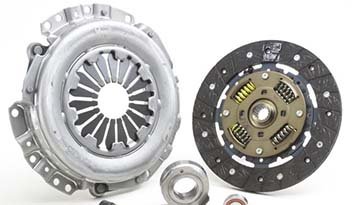Reliable Car Brakes & Clutch Repair Specialist Melbourne
Brakes and clutches are the most important part of any vehicle. There are various indications to show any issues with your brake or clutch, however, often by the time it is obvious, repair costs are higher. It is vital to have regular checks to keep your brakes and clutch in excellent order.

Brakes
If your car indicates signs of brake shudder, immoderate brake dust or uneven brake pad wear, you could have real issues with your vehicle.
Vibrations found on the steering wheel, brake pedal or the entire vehicle can be caused by the disc rotor surface being scored
- Hard or low (soft) brake pedal could mean restricted brake lines, tookcalipers or wheel cylinders, or damaged brake linings.
- Pulling to one side when braking, could mean; low tyre pressure seized callipers or brake adjustment required.
Clutches
If your car is experiencing from any of the following, you may need to repair or replace your clutch
- Careful gear selection or the clutch won’t release
- Shudders or a juddery clutch
- Clutch drag or vibration to clutch pedal
- Any clutch noises or rattles
- Slipping Clutch
How The Clutch Works
The clutch connects and disconnects the engine from the gearbox(transmission) allowing smooth gearchange and control of the engine power.
A clutch plate (driven plate) is coated on both sides with a hard wearing high friction material. This is situated between the engine flywheel and a spring loaded pressure plate. The spring/pressure can be released by depressing the clutch pedal.
While driving, the whole clutch assembly can be turning at very high speeds. To allow a non rotating clutch pedal to control the rotating clutch assembly a clutch release bearing uses a fork acting on a thrust face
Clutch – Controlling Engine Torque
The clutch has to transmit the engine power to the wheels allowing the vehicle to move. The torque of the engine is transferred by the clutch system relying entirely on the contact friction between 2 faces. A slipping clutch occurs when the friction is too low (often due to clutch wear) or engine torque is too high (during rapid acceleration)
Controlling Power Transmission via The Clutch – Clutch Slip
- The Coefficient of Friction of the engaging Clutch Faces
- Diameter of the Clutch Plate
- The Pressure or Spring Loading
How a Car Clutch Works with Normal Manual Driving
A Mechanical Linkage
The clutch pedal is connected directly to the clutch assembly via a mechanical linkage such as cable or chain.- A Hydraulic Clutch
Depressing the clutch pedal increases pressure in a hydraulic piston coupled to the clutch pedal. The increased pressure is transferred to a secondary piston that operates a lever to engage-disengage the clutch plates An electronic clutch – Clutch by Wire
Sensors detect the position of the clutch pedal electronically and interpret the position using an Electronic Control Unit (ECU) that computes the best way to operate the clutch based upon information relayed from other sensors indicating driving speed, engine speed and so on. The ECU relays information to a servo unit to actuate clutch operation.
